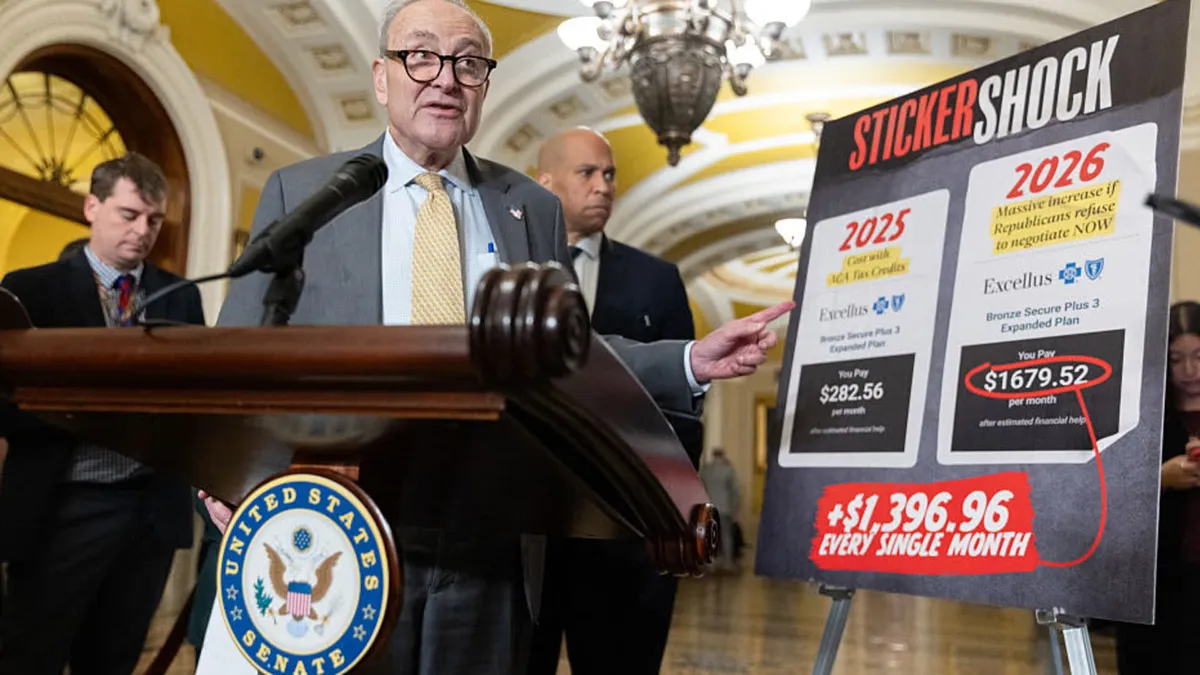
The open enrollment period for health insurance under the Affordable Care Act (ACA) marketplace is set to begin on November 1 in most states. However, millions of Americans may experience unexpected financial challenges when they attempt to sign up. A prolonged congressional deadlock regarding the extension of enhanced subsidies for insurance premiums has created uncertainty, leaving consumers vulnerable to significant price hikes.
According to Carolyn McClanahan, a physician and certified financial planner based in Jacksonville, Florida, many consumers could face substantial sticker shock as insurance costs rise. This unexpected financial burden could lead to a higher number of uninsured and underinsured individuals, exacerbating the ongoing issue of soaring premiums in the coming years. While the percentage of Americans utilizing ACA marketplace health insurance is relatively small, it holds enough weight to potentially influence close elections, as reported by KFF in October.
During the open enrollment period, consumers select their health plans for the upcoming year. This enrollment window typically lasts until January 15, but a crucial December 15 deadline exists to ensure coverage begins at the start of 2026. Unfortunately, many prospective enrollees find themselves in a state of financial uncertainty, as Congress has yet to extend the enhanced subsidies that reduce insurance premiums for approximately 22 million of the 24 million Americans purchasing coverage through ACA exchanges.
Without these subsidies, health premiums are projected to surge by an average of 114% in 2026, according to KFF, a nonpartisan health policy research organization. Certain groups, including early retirees with modest incomes, may experience even steeper increases. The enhanced subsidies, which have been in effect since the Biden administration's initiatives in 2021, are set to expire at the end of 2025, complicating the current situation further.
Experts, including Cynthia Cox, vice president and director of the ACA program at KFF, warn that many consumers may opt out of enrolling due to the impending premium increases during the open enrollment period. The financial ramifications will vary based on factors such as household income, age, and state of residence. For example, a couple aged 60 with an annual income of $85,000 could see their premiums rise over $22,600 in 2026. In contrast, a 45-year-old earning $20,000 in a non-Medicaid-expanding state may witness their premiums jump from $0 to an average of $420 yearly.
This congressional impasse could force many individuals to forgo coverage altogether or seek traditional employment that offers employer-based health insurance. Some may resort to purchasing lower-tier plans that feature lower upfront premiums but come with high deductibles, resulting in significant out-of-pocket costs when medical services are needed.
If younger, healthier individuals choose not to enroll in the ACA marketplace, insurers may be left with an older, less healthy population, potentially leading to even higher premiums in the future. Jonathan Burks, executive vice president of health and economic policy at the Bipartisan Policy Center, points out that the damage may already be done. Many individuals may log on during the enrollment period only to find unaffordable premiums, discouraging them from returning even if Congress later extends the enhanced subsidies.
Given the current uncertainty, prospective enrollees should approach the upcoming enrollment season with caution. According to Cox, it’s essential to choose health insurance coverage for 2026 without relying on the expectation that Congress will extend the enhanced subsidies. However, consumers should stay informed about potential legislative developments. If a deal is reached, it may alter their options and costs, so Cox suggests marking a calendar for late November or early December to reassess choices before the December 15 deadline.
Fortunately, the open enrollment period allows for some flexibility. Consumers can select a plan and later switch to another option within the enrollment window without penalties. It's crucial for individuals to avoid rushing their decision-making process, as changes can be evaluated up until the end of the enrollment period.
Even healthy individuals who seldom visit a doctor should consider maintaining some form of health insurance, including high-deductible plans, to guard against unexpected medical events. McClanahan advises those with minor health issues, such as hypertension or diabetes, to consider high-deductible plans on the ACA marketplace, potentially combining them with a direct primary care physician model. This approach can offer basic care services for a subscription fee.
For those facing serious health conditions requiring frequent medical attention, a comprehensive health insurance plan with a broader network and lower deductible is recommended. This approach may pose challenges for households that are set to lose enhanced subsidies, highlighting the importance of careful planning during the open enrollment period.